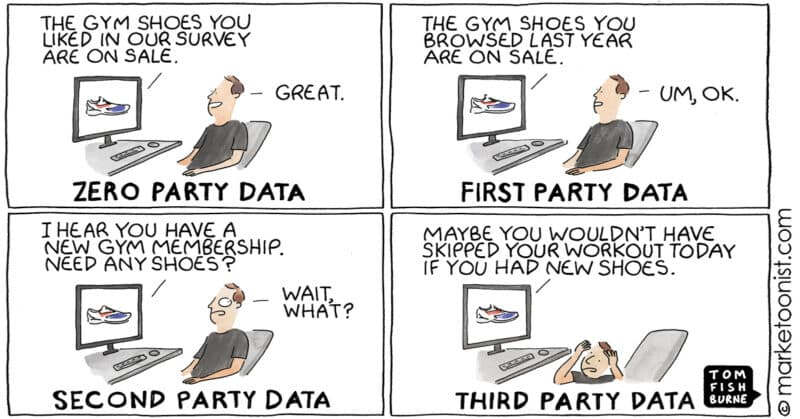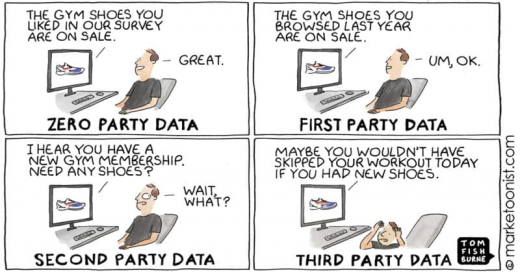The pendulum swings to composable stacks: Tuesday’s Daily Brief
One of the leading CMS vendors is changing course as marketing organizations move towards composable martech stacks.
Good morning, Marketers, and are you moving from big platforms to composable stacks?
A fascinating LinkedIn article by Real Story Group’s Tony Byrne suggests that Sitecore, the digital experience platform and vendor hub is making a major change of course. Sitecore’s CMS is a “high end but tightly coupled offering,” he writes — and it’s starting to look out of place as marketing organizations are increasingly looking to compose stacks from elements created by a number of vendors.
He also shrewdly points out that Sitecore is not alone. If anything, the Adobe and Salesforce eco-systems are starting to look complex and “monolithic,” no matter how many apps can integrate with them. Sitecore has been spending money — acquiring and integrating a CDP, a DAM and a third-party email solution. The real challenge is developing a native cloud-based CMS to replace the existing on-prem or Azure-based solution.
Where Sitecore is in a fortunate position is in having raised $ 1.2 billion earlier this year, presumably from investors who believe CEO Steve Tzikakis can deliver this roadmap.
Kim Davis
Editorial Director
Strategic marketing operations leaders can earn a seat at the top table
If some marketing operations professionals are hesitant about moving up the ranks into management and ultimately the CMO role, one person who is convinced a career path is available is Debbie Qaqish, Principal and Chief Strategy Officer with the Pedowitz Group. At the recent MO Pros Summer Camp, she had told me: “I do think you’re going to see these multifaceted, multi-talented leaders of marketing ops step up to that CMO role. I absolutely do see that.”
Her new book, “From Backroom to Boardroom” presents a research-based account of what strategic marketing operations leaders look like and how valuable they are to businesses. The strategic market operations leader, she writes “acts as a business leader, not a button pusher.” They are not siloed, they are cross-functional. They build teams, they engineer processes and they present themselves to the business as digital visionaries.
Qaqish is enthusiastic about the possibility of strategic marketing operations leaders making the step to the C-level. “Because the use of technology to reinvent business is so much more of an imperative now than it’s ever been, I think that what we will see is these leaders of marketing ops step up into that CMO role.”
Why we care. Marketing operations may not be at a crossroads quite yet, but the day is fast approaching when the best professionals will need to decide whether they are more comfortable as hands-on technicians or whether they’re ready to step up as strategic business leaders — and ultimately to the C-suite.
If the future of marketing lies in strategic deployment of marketing technology, as we believe, then it makes a lot of sense to have the people who best understand the technology leading strategic discussions and making strategic decisions.
The Tao of UGC: Doing something by doing nothing
User-generated content can elevate brands and give them an authentic voice — and it’s not as expensive as content produced inhouse or by agencies. But you must let UGC go, and trust the user to do the right thing, much like letting water find its own level. Impose control, and you risk losing the message that would make your brand look good. But guide UGC just a little bit, and it should work well.
An imperfect picture can be perfect, according to the Tao of UGC — that is, the right path to wisdom . “You should not be prescriptive. Let the customer be creative making the content,” said Gary Garafalo, CEO and co-founder of LoudCrowd, whose software enables brands to measure the effectiveness of UGC campaigns across platforms. Curation is necessary to make sure product placement is correct, like making sure a beach brand is being used by people in the ocean, he said, offering an example.
If you want to drive awareness, allow UGC to flow freely through social media. “Let the customer be more creative and diverse than you in the influencer/photographer relationship,” Garofalo said. If you want to drive conversions, curate the UGC to pick the images that work best on your web site, he added.
Data overload: Marketoon of the week

This week’s Marketoon takes us through the various stages of data intrusion at the hands of unsavvy data management.
Fishburne’s take: Marketers are starting to go on a data diet, changing from an emphasis on big data (collecting as much data as possible) to lean data (collecting only what delivers immediate value). But they’re also re-evaluating their data sources, shifting from third party data brokers to the data consumers willingly share about themselves directly to a brand. Forrester coined the term “zero party data” for this volunteered data: “Zero party data is that which a customer intentionally and proactively shares with a brand. It can include preference center data, purchase intentions, personal context, and how the individual wants the brand to recognize her.”
Why we care: Marketers should absolutely focus their efforts on collecting data that delivers value for their business. To avoid alienating potential and existing customers in the scenarios depicted above, keep the customer’s needs front and center. Are your personalized communications delivering immediate value to the customer?
Quote of the day
“No implementation of technology is going to magically bring sales and marketing together.” Jeffrey L. Cohen, Sr Principal Analyst, Gartner
The post The pendulum swings to composable stacks: Tuesday’s Daily Brief appeared first on MarTech.
(44)



